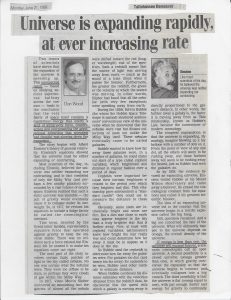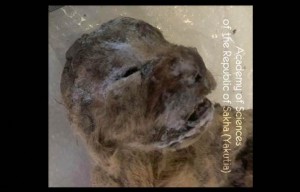The Universe is Expanding Rapidly, at an Ever Increasing Rate
On Monday, June 21, 1999, the Tallahassee Democrat published a newspaper article entitled: “Universe is expanding rapidly, at ever increasing rate.” A scan of the article can be view below:
 ge 1 of article)" width="231" height="300" />
ge 1 of article)" width="231" height="300" /> ge 2 of article)" width="235" height="300" />
ge 2 of article)" width="235" height="300" />This discovery surprised scientists back in 1998. Being generally agnostic or atheistic, they don’t much like this. Why? Because as Stephen Hawking said, it has “religious overtones and implications.” Why? Because, as he said, the universe is confirmed to be “expanding at the critical rate.” That is, not only to continue expanding at an ever increasing rate, but at just exactly the precise rate to go on expanding forever. There is no way this could happen by accident, or without a guiding hand – in other words, by a “Creator” (Isaiah 42:5).
